Hydrogen-storage materials for mobile applications
Mobility — the transport of people and goods — is a socioeconomic reality that will surely increase in the coming years. It should be safe, economic and reasonably clean. Little energy needs to be expended to overcome potential energy changes, but a great deal is lost through friction (for cars about 10 kWh per 100 km) and low-efficiency energy conversion. Vehicles can be run either by connecting them to a continuous supply of energy or by storing energy on board. Hydrogen would be ideal as a synthetic fuel because it is lightweight, highly abundant and its oxidation product (water) is environmentally benign, but storage remains a problem. Here we present recent developments in the search for innovative materials with high hydrogen-storage capacity.
This is a preview of subscription content, access via your institution
Access options
Subscribe to this journal
Receive 51 print issues and online access
196,21 € per year
only 3,85 € per issue
Buy this article
- Purchase on SpringerLink
- Instant access to full article PDF
Prices may be subject to local taxes which are calculated during checkout
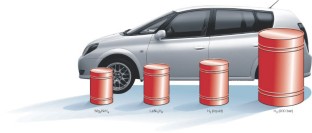
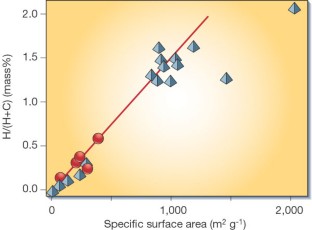
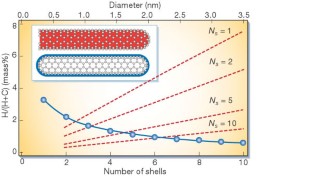
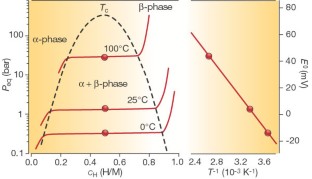
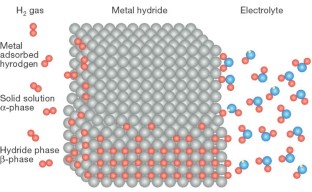
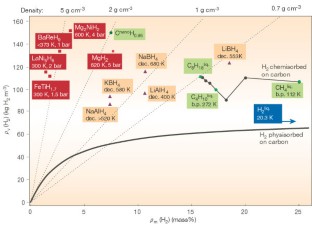
Similar content being viewed by others
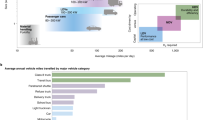
New roads and challenges for fuel cells in heavy-duty transportation
Article 25 March 2021
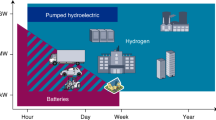
Challenges to developing materials for the transport and storage of hydrogen
Article 27 October 2022
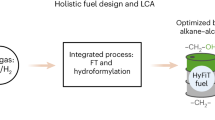
Towards carbon-neutral and clean propulsion in heavy-duty transportation with hydroformylated Fischer–Tropsch fuels
Article Open access 08 July 2024
References
- Winter, C. J. & Nitsch, J. Hydrogen as an Energy Carrier: Technologies, Systems, Economy (Springer, 1988). BookGoogle Scholar
- Bain, A. & Van Vorst, W. D. Int. J. Hydrogen Energy24, 399–403 (1999). ArticleCASGoogle Scholar
- Shell Hydrogen, Hydro-Québec (HQ) & Gesellschaft für Elektrometallurgie (GfE). Hydrogen storage joint venture to be established. 〈http://www.shell.com〉 Press release (12-07-2001).
- Nellis, W. J., Louis, A. A. & Ashcroft, N. W. Metallization of fluid hydrogen. Phil. Trans. R. Soc. Lond. A356, 119–135 (1998). ArticleADSCASGoogle Scholar
- Orimo, S.-I. et al. Hydrogen in the mechanically prepared nanostructured graphite. Appl. Phys. Lett.75, 3093 (1999). ArticleADSCASGoogle Scholar
- Orimo, S., Matsushima, T., Fujii, H., Fukunaga, T. & Majer, G. Defective carbon for hydrogen storage—thermal desorption property of the mechanically prepared nanostructured graphite. J. Appl. Phys. (in the press).
- Stan, G. & Cole, M. W. Hydrogen adsorption in nanotubes. J. Low Temp. Phys.110, 539–544 (1998). ArticleADSCASGoogle Scholar
- Hirscher, M. (ed.) Hydrogen storage in nanoscale carbon and metals. Appl. Phys. A (special issue) 72, 2 (2001). ArticleGoogle Scholar
- Sholl, C. A. & Gray, E. MacA. (eds) Proc. Int. Symp. Metal Hydrogen Systems—Fundamentals and Applications, Noosa, Australia, 1–6 October 2000. J. Alloys Compounds (in the press). Google Scholar
- Chambers, A., Park, C., Baker, R. T. K. & Rodriguez, N. M. Hydrogen storage in graphite nanofibers. Phys. Chem. B102, 4253–4256 (1998). ArticleCASGoogle Scholar
- Dillon, A. C. et al. Storage of hydrogen in single-walled carbon nanotubes. Nature386, 377–379 (1997). ArticleADSCASGoogle Scholar
- Dillon, A. C. et al. Carbon nanotube materials for hydrogen storage. Proc. 2000 DOE/NREL Hydrogen program review, 8–10 May 2000.
- Hirscher, M. et al. Hydrogen storage in sonicated carbon materials. Appl. Phys. A72, 129–132 (2001). ArticleADSCASGoogle Scholar
- Züttel A. et al. Hydrogen sorption by carbon nanotubes and other carbon nanostructures. J. Alloys Compounds (in the press).
- Chen, P., Wu, X., Lin, J. & Tan, K. L. High H2 uptake by alkali-doped carbon nanotubes under ambient pressure and moderate temperatures. Science285, 91–93 (1999). ArticleCASGoogle Scholar
- Hirscher, M. et al. Hydrogen storage in carbon nanostructures. J. Alloys Compounds (in the press).
- Nijkamp, M. G., Raaymakers, J. E. M. J., Van Dillen, A. J. & De Jong, K. P. Hydrogen storage using physisorption—materials demands. Appl. Phys. A72, 619–623 (2001). ArticleADSCASGoogle Scholar
- Züttel, A. et al. Hydrogen storage in carbon nanostructures. Int. J.Hydrogen Energy (in the press).
- Enoki, T., Shindo, K. & Sakamoto, N. Electronic properties of alkali-metal-hydrogen-graphite intercalation compounds. Z. Phys. Chem.181, 75–82 (1993). ArticleCASGoogle Scholar
- Schlapbach, L. (ed.) Hydrogen in Intermetallic Compounds I. Electronic, Thermodynamic, and Crystallographic Properties, Preparation (Topics in Applied Physics Vol. 63) (Springer, 1988). BookGoogle Scholar
- Schlapbach, L. (ed.) Hydrogen in Intermetallic Compounds II. Surface and Dynamic Properties, Applications (Topics in Applied Physics Vol. 67) (Springer, 1992). Google Scholar
- Sandrock, G. & Thomas, G. The IEA/DOC/SNL on-line hydride databases. Appl. Phys. A72, 153–155 (2001). ArticleADSCASGoogle Scholar
- Sakai, T., Natsuoka, M. & Iwakura, C. Rare earth intermetallics for metal–hydrogen batteries. Handb. Phys. Chem. Rare Earths21, 135–180 (1995). Google Scholar
- Latroche, M., Percheron-Guegan, A. & Chabre, Y. Influence of cobalt content in MmNi(4.3–x)Mn0.3Al0.4Cox alloy (x = 0.36 and 0.69) on its electrochemical behaviour studied by in situ neutron diffraction. J. Alloys Compounds295, 637–642 (1999). ArticleGoogle Scholar
- Schlapbach, L., Felix Meli, F., Züttel, A., Westbrook, J. H. & Fleischer, R. L. (eds) in Intermetallic Compounds: Principles and Practice Vol. 2, Ch. 22 (Wiley, 1994). Google Scholar
- Zaluska, A., Zaluski, L. & Stroem-Olsen, J. O. Structure, catalysis and atomic reactions on the nano-scale: a systematic approach to metal hydrides for hydrogen storage. Appl. Phys. A72, 157 (2001). ArticleADSCASGoogle Scholar
- Yvon, K. Complex transition metal hydrides. Chimia52, 613–619 (1998). CASGoogle Scholar
- Liu, F. J. & Suda, S. A method for improving the long-term storability of hydriding alloys by air water exposure. J. Alloys Compounds231, 742–750 (1995). ArticleCASGoogle Scholar
- Akiba, E. & Iba, H. Hydrogen absorption by Laves phase related BCC solid solution. Intermetallics6, 461–470 (1998). ArticleCASGoogle Scholar
- Kuriiwa, T. et al. New V-based alloys with high protium absorption and desorption capacity. J. Alloys Compounds295, 433–436 (1999). ArticleGoogle Scholar
- Tsukahara, M. et al. Hydrogen storage and electrode properties of V-based solid solution type alloys prepared by a thermic process. J. Electrochem. Soc.147, 2941–2944 (2000). ArticleCASGoogle Scholar
- Inoue, H. et al. Effect of ball-milling with Ni and Raney Ni on surface structural characteristics of TiV2.1Ni0.3 alloy. J. Alloys Compounds325, 299–303 (2001). ArticleCASGoogle Scholar
- Bogdanovic, B. & Schwickardi, M. Ti-doped alkali metal aluminium hydrides as potential novel reversible hydrogen storage materials. J. Alloys Compounds253, 1–9 (1997). ArticleGoogle Scholar
Acknowledgements
We thank the Swiss Federal Office of Energy (BFE), in contract with IEA, the Swiss Federal Office of Education and Science (BBW), and the University of Fribourg and EMPA for support of our hydrogen-storage research projects.
Author information
Authors and Affiliations
- EMPA, Swiss Federal Laboratories for Materials Research and Testing, Dübendorf, CH-8600, Switzerland Louis Schlapbach
- Physics Department, University of Fribourg, Fribourg, CH-1700, Switzerland Louis Schlapbach & Andreas Züttel
- Louis Schlapbach










